Related Research Articles

Kollam, also known by its former name Quilon, is an ancient seaport and city on the Malabar Coast of India bordering the Laccadive Sea, which is a part of the Arabian Sea. It is 71 km (44 mi) north of the state capital Thiruvananthapuram. The city is on the banks of Ashtamudi Lake and the Kallada river. Kollam is the fourth largest city in Kerala and is known for cashew processing and coir manufacturing. It is the southern gateway to the Backwaters of Kerala and is a prominent tourist destination. Kollam is one of the most historic cities with continuous settlements in India. Geographically, Quilon formation seen around coastal cliffs of Ashtamudi Lake, represent sediments laid down in the Kerala basin that existed during Mio-Pliocene times.

The Kerala backwaters are a network of brackish lagoons and canals lying parallel to the Arabian Sea of the Malabar coast of Kerala state in south-western India. It also includes interconnected lakes, rivers, and inlets, a labyrinthine system formed by more than 900 km (560 mi) of waterways, and sometimes compared to bayous. The network includes five large lakes linked by canals, both man made and natural, fed by 38 rivers, and extending virtually half the length of Kerala state. The backwaters were formed by the action of waves and shore currents creating low barrier islands across the mouths of the many rivers flowing down from the Western Ghats range. In the midst of this landscape there are a number of towns and cities, which serve as the starting and end points of backwater cruises. There are 34 backwaters in Kerala. Out of it, 27 are located either closer to Arabian Sea or parallel to the sea. The remaining 7 are inland navigation routes.

Ashtamudi Lake, in the Kollam District of the Indian state of Kerala. It possesses a unique wetland ecosystem and a large palm-shaped water body, second only in size to the Vembanad estuary ecosystem of the state. Ashtamudi means 'eight braids' in the local Malayalam language. The name is indicative of the lake's topography with its multiple branches. The lake is also called the gateway to the backwaters of Kerala and is well known for its houseboat and backwater resorts. Ashtamudi Wetland was included in the list of wetlands of international importance, as defined by the Ramsar Convention for the conservation and sustainable utilization of wetlands.
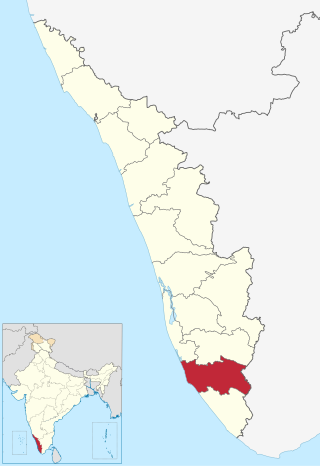
Kollam district, is one of 14 districts of the state of Kerala, India. The district has a cross-section of Kerala's natural attributes; it is endowed with a long coastline, a major Laccadive Sea seaport and an inland lake. The district has many water bodies. Kallada River is one among them, and the east side land of river is East Kallada and the west side land is West Kallada.
Karunagappally is a municipality in the Kollam district of Kerala, India. It is 24 km north of Kollam and 60 km (37 mi) south of Alappuzha. Karunagappally taluk consists of Alappad, Ochira, Adinad, Karunagappally, Thazhava, Pavumba, Thodiyoor, Kallalibhagom, Thevalakkara, Chavara, Neendakara, Clappana, Kulasekharapuram, Thekkumbhagam, Ayanivelikulangara, Panmana, Ponmana and Vadakumthala. The taluk is bound on the north by Kayamkulam, on the east by Kunnathur taluk, on the south by Kollam and on the west by the Arabian Sea. It is one of the fastest developing towns in Kerala and is part of Kollam metropolitan area.
Kundara is a census town in Kerala and is part of the Kollam Metropolitan Area, India. Kundara is situated 13 km east of Kollam city, 14 km west of Kottarakkara, and 24 km north of Paravur. Kundara is significant for its historic involvement in the Indian independence movement.

Fishing in India is a major sector within the economy of India contributing 1.07% of its total GDP. The fishing sector in India supports the livelihood of over 28 million people in the country, especially within the marginalized and vulnerable communities. India is the third largest fish producing country in the world accounting for 7.96% of the global production and second largest producer of fish through aquaculture, after China. The total fish production during the FY 2020-21 is estimated at 14.73 million metric tonnes. According to the National Fisheries Development Board the Fisheries Industry generates an export earnings of Rs 334.41 billion. Centrally sponsored schemes will increase exports by Rs 1 lakh crore in FY25. 65,000 fishermen have been trained under these schemes from 2017 to 2020. Freshwater fishing consists of 55% of total fish production.

Kavanad is a suburban area of Kollam Municipal Corporation in Kerala. It is a major market town located at the northern suburb of Kollam City in India. It is coming under Sakthikulangara zone of Kollam Municipal Corporation. It is just 3 km from the port town of Neendakara. Kavanad, a narrow strip of land sandwiched between the Arabian Sea and the Ashtamudi Lake has one of the highest land values in Kollam city. The town emerged as a major shopping destination in Kollam with the advent of a number of shopping centres. A number of vehicle showrooms are also located at Kavanad-Ramankulangara-Mulamkadakam stretch. The long anticipated Kollam bypass starts just a kilometer before Kavanad from the place called Altharamoodu and was completed in January 2019, Kavanadu had become a major vantage point en route to Trivandrum from Alappuzha and is a fast developing satellite town within Kollam Metropolitan Area. You can also find 24 hr working shops in Kavanad which is a rarity in Kerala. Kavanadu is a major tourist attraction of Kollam district.
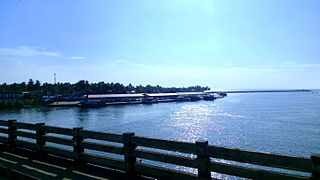
Neendakara is a suburb of Kollam city in Kerala, India .The twin harbours, Neendakara and Shakthikulangara are located here. |url=https://www.tourmyindia.com/states/kerala/neendakara-port-kollam.html Trawling ban and withdrawal of the state official start from Neendakara harbour. It is about 10km away from the city center.
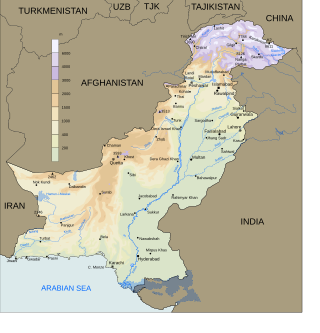
Fishery and fishing industry plays a significant part in the national economy of Pakistan. With a coastline of about 1,120 km, Pakistan has enough fishery resources that remain to be developed. Most of the population of the coastal areas of Sindh and Balochistan depends on fisheries for livelihood. It is also a major source of export earning.

Tangasseri or Thangassery (Thangi) is a heavily populated beach area on the shores of the Arabian Sea in Kollam city, Kerala, India.
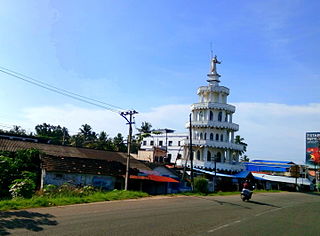
Sakthikulangara is a zone and neighbourhood situated at the coastal area of the city of Kollam in Kerala India. It is one among the 6 zonal headquarters of Kollam Municipal Corporation.

Kollam Port is one of the historic ports situated 4 kilometres (2.5 mi) away from Downtown Kollam It is the second largest port in Kerala by volume of cargo handled and facilities. Located on the south-west coast of India, under the name of Quilon Port it became one of the country's most important trade hubs from the ninth to the seventeenth centuries. Kollam was one of the five Indian ports visited by Ibn Battuta.

The Kerala State Cashew Development Corporation Limited or KSCDC is a model employer in the field of cashew industry mainly to protect the interest of workers and to provide maximum employment to its workers and to give statutory benefits like minimum wages, bonus, etc. prevailing in the cashew industry. It is headquartered in Kollam city, called "Cashew Capital of the World". The head office is situated at Cashew House, Mundakkal in Kollam City, Kerala. KSCDC was incorporated in July 1969 and started Commercial activities in the year 1971 as a company fully owned by the Government of Kerala. Corporation has now more than a turn over of Rs. 2.50 billion. A Central Export Promotion Council for Cashew, Cashew Export Promotion Council of India (CEPCI) is situated at Kollam city.
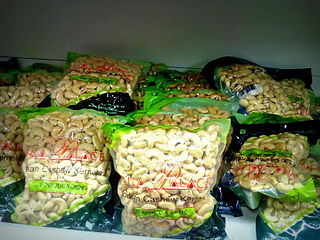
The Cashew business in Kollam is based in the eponymous city, which is known as the Cashew Capital of the World. Kollam is the largest processed cashew exporter in the world. As of 2011 there were more than 600 cashew processing units in the city. About 800,000 tonnes of raw cashews are imported to the city for processing every year. 80% of India's export quality cashew kernels were prepared in Kollam. Kollam has remained the cashew capital of the world since the 1930s.
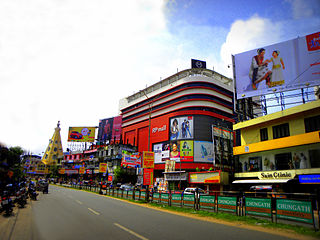
Kollam or Quilon is an old seaport and a city on the Laccadive Sea coast in Kerala, India, on Ashtamudi Lake. The city remains notable as the ancient commercial capital of Kerala and the southwestern Indian coast, in addition to its fame as the "Cashew Capital of the World". The Kollam Municipal Corporation has the second largest budget in Kerala in terms of revenue and expenditure.

Thoppilkadavu or Thoppilkkadavu is one of the neighbourhoods of the city of Kollam, located on the shores of Ashtamudi Lake in Kerala, India. It is an integral part of Kollam city. Presence of Ashtamudi Lake is increasing the importance of Thoppilkadavu as one of the tourism hotspots in the city. Thoppilkadavu is the western endpoint of Asramam Link Road in the city.
Pallithottam is a neighbourhood of Kollam city situated at the coastal region. It is the 46th ward in Kollam Municipal Corporation. Pallithottam is totally depending on fishing activities and operations of Kollam Port.

City of Kollam or Quilon is a Port city in South India and was the commercial capital of erstwhile Kingdom of Travancore. It is situated on the Laccadive Sea coast of South Kerala. The city is known as the "Gateway to the backwaters of Kerala". The city lies on the banks of Ashtamudi Lake, Kerala's second largest lake, on the Arabian sea coast. Major parts of Kollam city are covered by Ashtamudi Lake.
Neendakara port is an intermediate port located in the Kollam district of Kerala. It is situated on the Ashtamudi Lake, which comprises both sides - Neendakara and Sakthikulangara. The port is used for fishing and cargo transportation. It has the capacity to contain over 500 fishing boats at a time.
References
- ↑ "KSCADC". www.keralacoast.org.
- ↑ Gerhardsen, G. M. (1958). "The Indo-Norwegian Project". pp. 118–122.
- ↑ "Kerala's Ashtamudi lake gets recognition for sustainable clam fishing". The Hindu. 7 November 2014.
- ↑ "Neendakara, Beach, Fishing Harbour, Kollam, Kerala, India". Kerala Tourism.